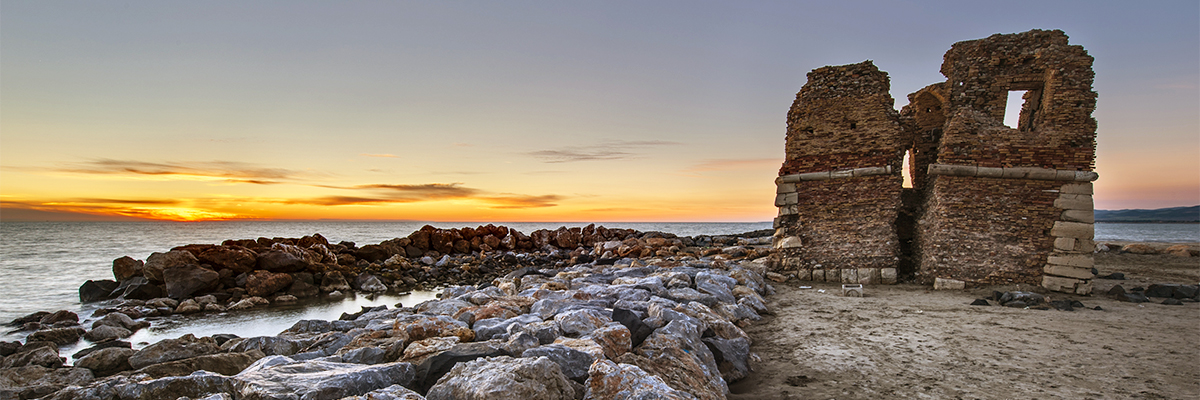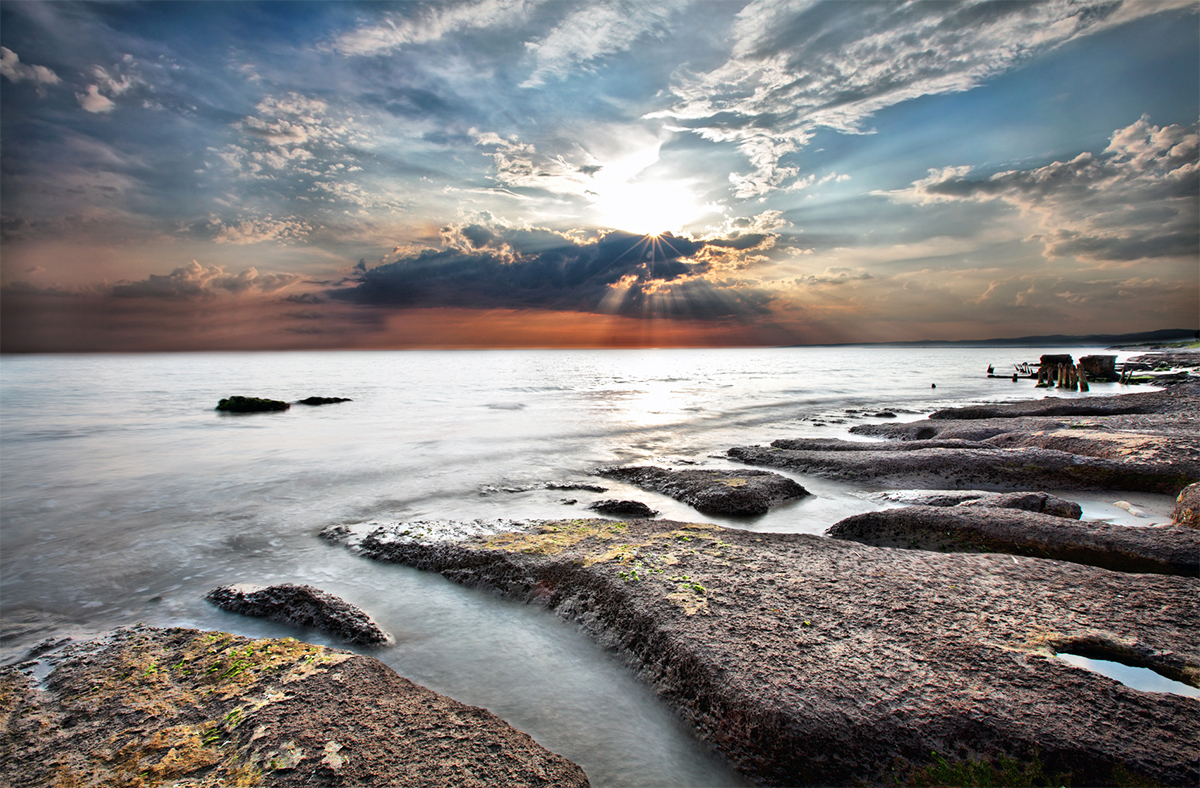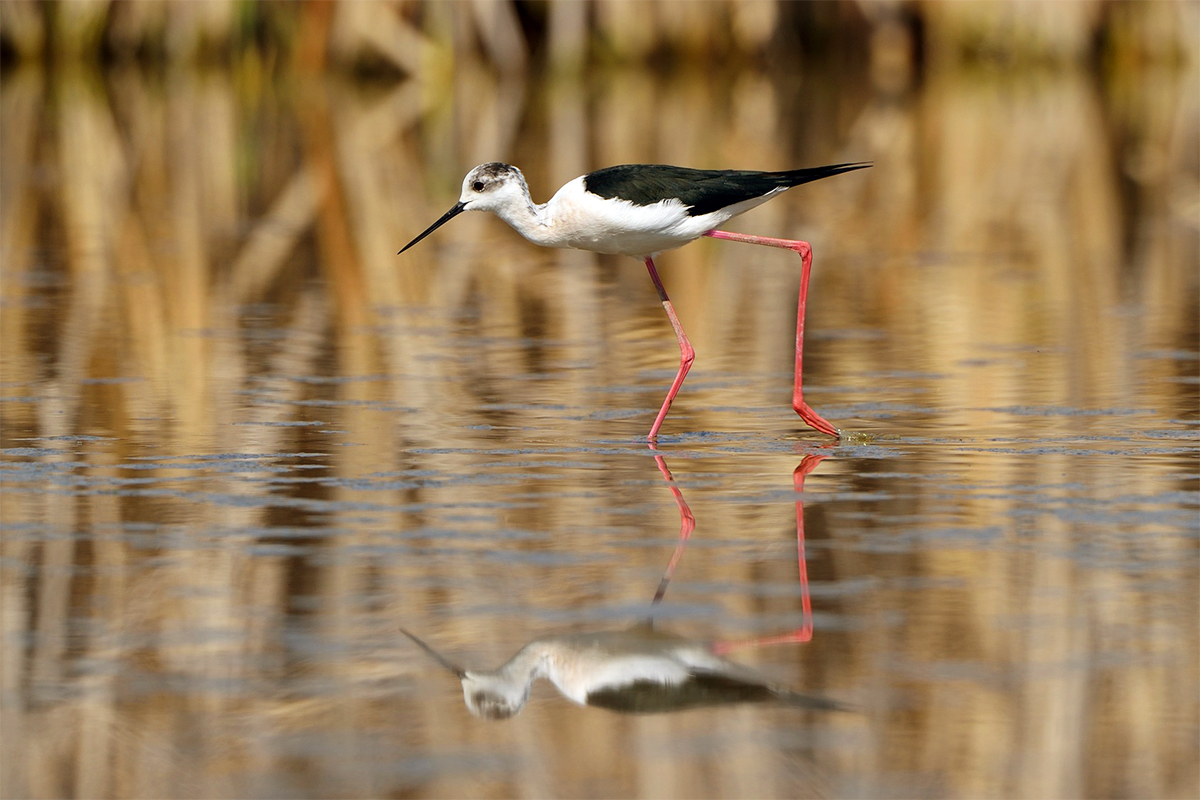Oasis of Flavia Tower
Between Ladispoli and Cerveteri, the Natural Reserve of Flavia Tower is a piece of unspoiled beach appreciated by birdwatching loversBetween the seaside town of Ladispoli and the small town of Cerveteri, along the coast spreads for about 40 hectares the Natural Monument of Flavia Tower Marshland, by now one of the rare swamp of Lazio coastline, important natural habitat for migratory birds and for birdwatching lovers.

The beach were stand the suggestive remains of Flavia Tower
THE OASIS
The Oasis is characterized by the remains of an old sixteenth-century tower, built on top of a previous Medieval construction commissioned by Cardinal Flavio Orsini in order to be able to sight Saracenic pirate incursions. Close to the tower are visible, at low tide, the remains of the Roman walls, very likely part of a villa today sunken under water. The Tower was bombed during the Second World War and due to the continuous erosion, it looks today like suggestive ruins emerging from the water, about eighty meters ashore.
The swamp, instead, is recognized as regional natural monument and declared special protection area. The land is presented like a succession of small hollows that are seasonally filled with water, due to the emergence of the coast stratum, the suply of fresh water from ashore and the winter rains. The variation of the water's salinity has generated a typical vegetation of brackish areas, like the salicornia, symbol of the oasis, sea barley and limonium.
The most inland area, swampy most of the year, with less brackish water, is sovered by common reed, lilium and different species of bulrush. Among the fauna, on the other hand, the most common are birds, that found the ideal environment both for overwintering and to stop during migrations.

Natural Monument of Flavia Tower Marshland
BIRDWATCHING
The area is specially appreciated by birdwatching lovers. In the brackish basins around the tower alights the common stilt and many other birds that use the marshland to stop during migrations: purple and grey herons, little egrets, mallards, teals, kestrels and others.

The common stilt with its long red paws
THE FLAVIA TOWER MARSHLAND TODAY
The oasis of Flavia Tower today is considered an open laboratoriy where reasearch and specific strategies take are tested to aim at the conservation of biodiversity. It has been included among LTER sites (Long Term Ecological Research) by the Ministry of Agricultural, Food and Forestry Policies.
The Flavia Tower Marshland was chosen in 2014 as the “Most beautiful oasis to practise birdwatching” through an online voting by naturalists and enthusiasts on the site of the EBN Association.
The natural oasis of Flavia Tower is a small pearl, easily reachable from Rome and Civitavecchia. A piece of unspoiled beach, a land rich of history, that enables us, still today, to dream.
Useful information
National Monument of Flavia Tower Marshland
- HOW TO GET THERE
By car
Take the highway A12 Roma-Civitavecchia (exit Ladispoli-Cerveteri). After the exit, continue to Ladispoli in Via Settevene Palo and once you get to the roundabout, take the first exit on your right to turn into the Aurelia. Continue until you turn left in Via Fontanella Morella. At the crossroads with Via Roma you will arrive in front of one of the two entries to the marshland. The main entry is a bit further up in Via Roma 141.
Public Transports
If you are coming from Civitavecchia or from Rome we recommend to take the regional train and get off at the Ladispoli-Cerveteri Station. Then continue by bus towards Torre Flavia. As an alternative, you can get off at the stop Marina di Cerveteri and walk for about 20 minutes.
- TIMETABLES
Admission is free and there are no opening or closing times. For you visit, it is advisable to wear gumboots and to carry along binoculars or a camera. It is strictly forbidden to go beyond the enclosure and the forbidden areas to avoid frightening the fauna.



 PORT MOBILITY CIVITAVECCHIA
PORT MOBILITY CIVITAVECCHIA












